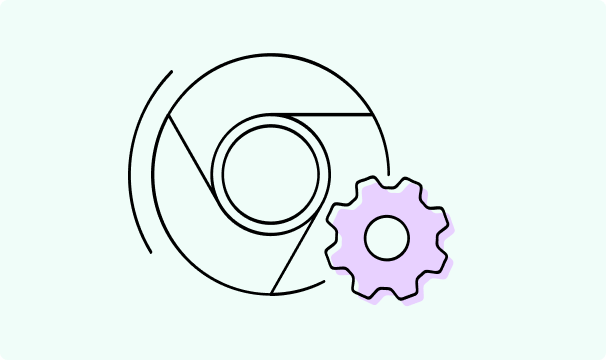What Is "Not-a-Virus" and How to Deal With It
Everything your antivirus software signals about should be taken seriously. Even if it's something labeled "not-a-virus." You'll learn about these warnings and how to deal with them in this article.

Rasa Sosnovskytė
5 min read

An article about what "Not-a-Virus" notifications are, answering what they might mean, their potential harm, and how to deal with them to avoid potential security risks.
Understanding "Not-a-Virus"
Viruses are malware that spreads between computers, causing damage to systems and stored data. It's one of the most dangerous online threats and one of the main reasons many antivirus software and other cybersecurity tools exist.
Learning how to know if your computer has a virus is important, but if something's labeled as "not-a-virus" it doesn't mean it isn't a cause for concern. Two types of applications can trigger "not-a-virus" notifications - adware and riskware.
Adware, also called advertising-supported threatware, aims to automatically download and display ads, such as banners, pop-ups, and similar. Since it can be installed with the user's consent, it's not necessarily one of the malicious programs.
The problem is that many users agree to adware by accident, and that's why your antivirus will inform you about it even if it's not a virus. If adware does not inform the user about ads, some antivirus programs may even flag it as a trojan.
Riskware is an otherwise legitimate program with potential security vulnerabilities due to incompatibility or legal issues. Such software might be used for its intended purposes, but the potential threat is that bad actors often install or leverage it for malicious goals.
Riskware can modify or delete files, block access, copy data, and disrupt the performance of a system or network in other ways. Your antivirus is raising awareness about such software to ensure you know what you are doing.
Potential Harm and Privacy Risks
Riskware and adware can cause much of the same damage a virus can. The potential harm and privacy risks associated with it vary depending on what program triggers the "not-a-virus" notification.
Browser toolbars
While toolbars are useful for extending your browser functionality, they carry risks worthy of being flagged with a "not-a-virus" notification.
Some are simply poorly maintained and have serious security vulnerabilities, essentially making them riskware. Others install adware to show you unwanted ads to make a profit.
Download managers
A download manager is supposed to help you take control of files you get from the internet, but due to some sneaky tactics, they can accomplish the opposite.
Their UI might not inform you of unwanted extra files downloading in the background. Not displaying them at all or with a gray font are common tricks worthy of being treated as a "not-a-virus" threat.
Remote admin applications
Remote computer management software is a crucial tool for troubleshooting device issues remotely. It's safe if you downloaded it yourself, but it's a security hazard for uninformed users.
Remote admin tools are often included as a broader malware package, which is a big cause for concern. Your antivirus software is right to notify you about it.
Bitcoin miner
Miner software intensely uses your device's resources to generate (mine) cryptocurrency. The process itself isn't malicious, except when it's abused by bad actors.
If you installed a miner knowingly, you might profit from it. If not, then someone else does. Illicit Bitcoin miners might be the worst riskware that is not a virus. They are difficult to detect and take away processing power without benefitting you.
Dealing with "Not-a-Virus" Notifications
If it was you who installed any of these programs and know what you are doing, then the "not a virus" alert can be largely ignored. If not, it's a cause to take action or, better yet, take preemptive measures.
Installing software safely
Common safety measures include downloading programs only from trusted sources and staying up to date with current threats. A few more specific ones can be added to avoid adware and riskware.
Always read the terms and conditions of the software you install. Also, make sure to uncheck any boxes offering other programs, as they are more likely to include malicious files.
Software updates
Keeping your operating system and other crucial software up to date is essential for cybersecurity, including protection against threats that are not viruses.
It greatly reduces the threats of riskware as there are fewer vulnerabilities to exploit. Up-to-date software also creates fewer opportunities for adware to flourish.
Safe browsing practices
Many not-a-virus notifications are caused by your online actions. Understanding how to browse safely is crucial for avoiding them.
It's best to use only trusted websites with HTTPS encryption. You should also avoid public Wi-Fi or other shared networks. What's even better is if you take proactive measures with a Virtual Private Network (VPN).
While VPNs do not detect malware the reason why use a VPN is important becomes clear when changing IP and encrypted traffic create headaches for bad actors. A high-speed CometVPN accomplishes all of it while not slowing down your connection.
Of course, there might be problems like VPN not connecting, but they are solved quite easily and the encryption provided is worth it. You can learn more about it in our internet connection encryption guide.
Antivirus
Most antivirus programs do not block or delete riskware and adware by default. They leave the decision to the user so as not to corrupt existing software.
Still, an antivirus is crucial for having an option to make a choice in the first place. Without it, you might not even be aware that a malware package, even if it's not a virus, was installed.
Conclusion
In short, not-a-virus notifications aim to raise your awareness about something that isn't necessarily malicious but likely is. Unless, of course, you know what you're doing, then you can simply ignore them.

Author
Rasa Sosnovskytė
Chief Executive Officer at Growth Bite
Rasa is a well-known SEO expert and co-founder of Growth Bite, a digital marketing agency. She has previously worked with globally recognized brands such as NordVPN, Oxylabs, and many others.
Related articles

4 min read
Best Residential VPN Providers in 2025
A Virtual Private Network (VPN) encrypts your traffic and hides your IP address. The way these functions are accomplished affects various aspects of your online privacy and security.
Here, we'll consider using residential IP addresses instead of those originating from a data center. A residential VPN has advantages compared to traditional ones, but there are some caveats. It all boils down to residential VPN providers.
The worst ones may even create more risks than benefits. We'll end this article with a list of the best residential VPN providers on the market.

Guoda Šulcaitė
4 min read
Ethernet vs Wi-Fi: Which One is Better?
Ethernet and Wi-Fi are the two main ways to connect your computer to the internet. While Wi-Fi has received significantly more attention in recent years, especially among consumers, due to its simplicity and flexibility, ethernet is still widely used in various other applications.
Even if Wi-Fi is significantly more popular, it isn’t strictly better. Both methods have their benefits and drawbacks. Wi-Fi’s popularity comes from its ease-of-use and flexibility, but an ethernet connection can be much more useful in certain scenarios.

Adomas Šulcas

5 min read
How to Change Chrome Proxy Settings: The Ultimate Guide
A proxy server is an easy alternative to a VPN that can perform most of the functions of the latter. It’s a server that stands between your device and the destination server, taking your connection requests and forwarding them in your name.
Destination servers in almost all cases see the proxy server as the originator of the request. As such, proxies are widely used in various, mostly business-related applications whenever privacy, security, location changing, and several other factors are at play.

Guoda Šulcaitė